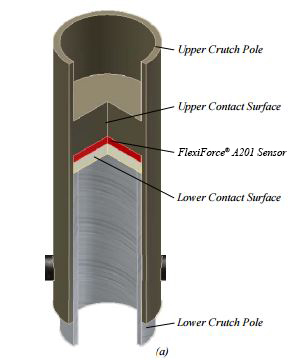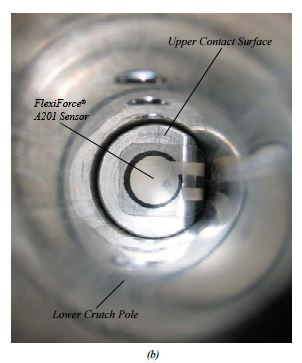Background
Following leg injuries and surgeries, it is critical for patients to reduce weight-bearing activity on their recovering leg and to gradually increase the weight they put on that leg over time. Taking these precautions helps bones and tissue heal correctly. Physiotherapists often help their patients through this recovery process by advising patients to apply a specified fraction of their body weight to a forearm crutch as they walk, until their recovering leg can withstand their full weight.
Challenge
Without a measurement tool, physiotherapists are unable to objectively verify whether patients are loading the right percentage of weight onto the crutch. Instead, they visually assess the patient’s gait and provide subjective feedback.
Professors from the University of Southampton and Otto-von-Guericke University paired up with clinicians from the Southampton University Hospitals NHS Trust to create a research tool for physiotherapists at Southampton General Hospital. Together, they developed forearm crutches that provide objective force feedback with three goals:
- Provide real-time data to the clinician so they can offer better training around using the crutch,
- Locally log data for the clinician to analyze and monitor on a long-term basis, and
- Provide the patient with real-time feedback to help them monitor their own use of the instrument.
Solution
To measure the force a patient applies to their crutches, the team embedded FlexiForce™ A201 sensors inside standard forearm crutches, where the sensors could measure direct compression through the crutch axis. The team had considered using strain gauges to obtain force measurements; however, they determined that the low-cost and ease of integrating a force sensitive resistor made FlexiForce the preferred option over strain gauges.
|
Figure (a) is a drawing of the location within the crutch pole where engineers embedded the FlexiForce A201 sensor. (1) |
Figure (b) is a photograph which shows where the sensor was placed, (looking up at the main crutch pole before the bottom crutch pole was inserted. (1) |
In addition to applied force, the augmented crutches also take into account the degree the crutches are tilted and hand position on the crutch grips in order to determine the weight that’s applied to the recovering leg*. A microcontroller attached to the outside of one crutch (on the prototype) captures data from both crutches and then sends it wirelessly to a remote computer where the data can be processed. (Once past the prototype phase, the team planned to house all hardware inside the crutch pole.) The crutch provides audible feedback to the patient when they load too much or too little weight on their recovering leg.
Tests of the prototype demonstrate that the augmented crutches provide patients and physiotherapists with valuable objective feedback.
* For more detailed information on the algorithm used to determine the weight applied to the recovering leg, please see the full journal article. (Ettabib, Hallett, Merrett, Peters, & White, 2010)
(1) Ettabib, Mohamed A; Hallett, Georgina; Merrett, Geoff V; Peters, Christian; White, Neil M. Measurement Science and Technology (2010). Augmenting Forearm Crutches with Wireless Sensors for Lower Limb Rehabilitation.





